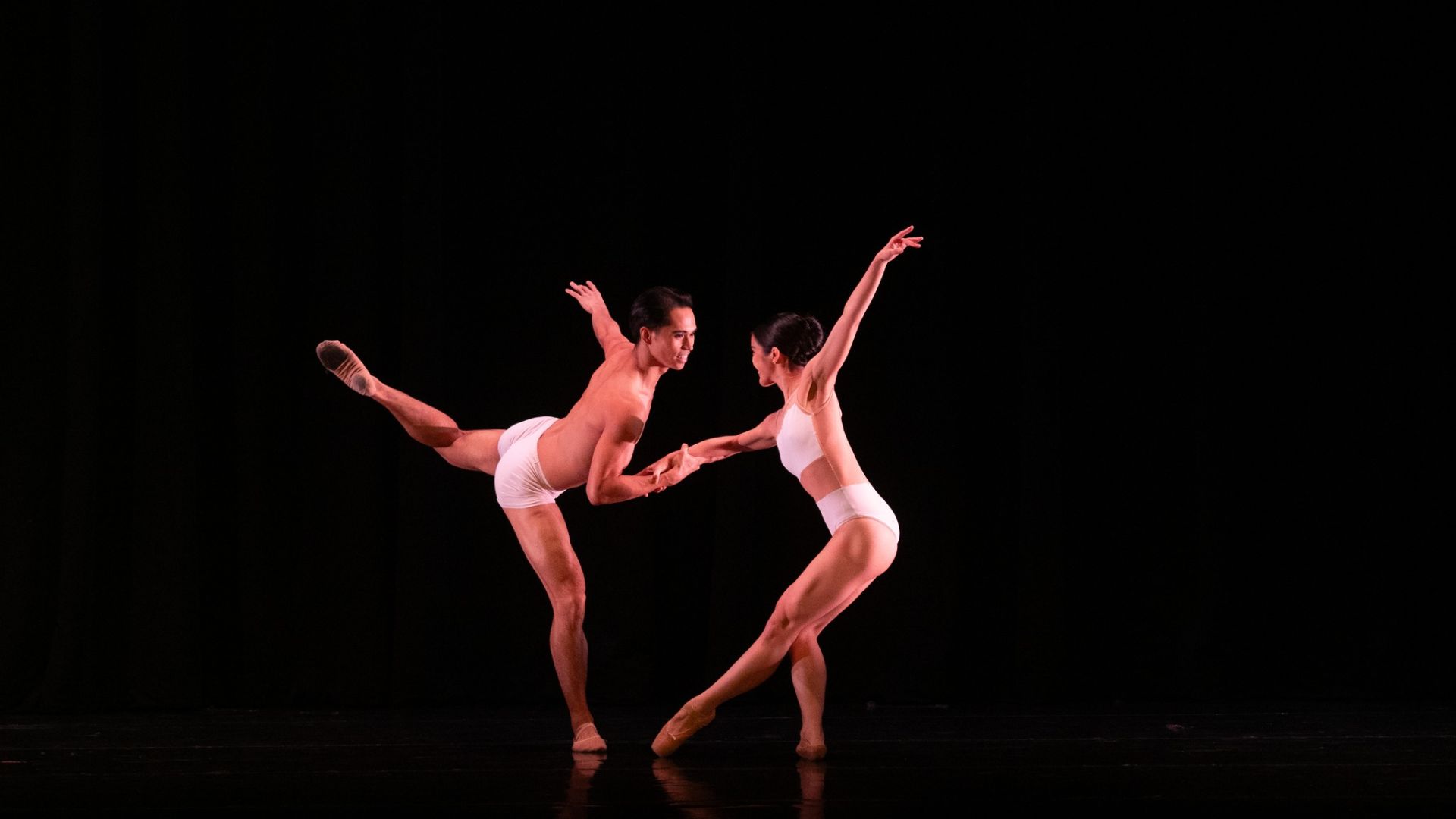
Alice Reyes Dance Company, Cultural Center of the Philippines, and Professional Artist Support Program with the generous support of Samsung Performing Arts Theater Circuit Makai and Birch Tree Adult Boost presents Carmen and other Spirits featuring Alden Lugnasin’s Swimming the Ilog Pasig, Ronelson Yadao’s Two, Lester Reguindin’s Now, and National Artist for Dance Alice Reyes’ Carmen. The first three were short ten (10) minute dances, while the last is about an hour and a half. All are dances and music with character dialogue. Samsung, as a reputable electronics brand, proves its technology with a well-designed theater, though legroom can have some space in future versions.
Alden Lugnasin’s Swimming the Ilog Pasig featured synchronized swimming acts on stage with dancers wearing the swimwear company Speedo outfit with swimming caps. Dancers assembled together and stood on a movable stair at the center stage performing an act of synchronized swimming. A swimmer’s movement is reenacted above and underwater through the dance choreography. Audiences can imagine the swimmer at different phases of the act from warming up above water, to doing swim laps back and forth, and slowly moving underwater, all on stage without actual water. Dancers were able to help audiences visualize changing scenes without moving furniture on stage and simply changing movements at the center of the stage like an exhibition piece. Audiences are quickly drawn in imagination whether the dancers are in groups or in solo. An interesting welcome for audiences to appreciate.

Ronelson Yadao’s Two is a smooth flow of dances of a couple, one is swayed by the other for continuous flow of movements. This style of continuous turns between the two dancers are a hint of couple movements to see in Carmen.
Lester Reguindin’s Now features a young girl affirming beliefs from her home and society, although without dialogue, the voice over is enough to emphasize intensity of emotion to relay. The synchronized movement of the supporting dancers in black and white suits complemented the young girl’s anxiety and affirmation about her environment. Imagine the world and people all overturning around us – a glimpse of the character’s disturbed stated in search of affirmation around.
The short performances with contemporary-inspired concepts, outstanding choreography, consequential lighting that guides the audience, and signature attire prepares the audience for what to come.
Audiences are brought to Alice Reyes’ version of Carmen inspired from the 1800s novel by French writer Prosper Merimee who was inspired by other literature about gypsies in Spain. The story starts with French writer Prosper Merimee asking Don Jose on the killing of gypsy Carmen. Carmen is adorned by three men, namely corporal Don Jose, lieutenant Zuniga, and superstar bullfighter Escamillo. Don Jose admits stabbing Carmen at the end of the story.
There are a few stereotypes about Spain and the story captures them such as the attire of the soldier and gypsy, the bullfighting culture, offering of rose, the warm building architecture, and popular musical melody – classical canon, habanero, and toreador song.

Each scene is worth anticipating with ample transitions. The story was rendered to allow the audience to appreciate the movements. The dances whether solo, couple, or group at the plaza scene are beautiful with the flare from the gypsies’ dresses. Some scenes that may be sensitive for general audiences such as intimacy and stabbing were quite neutralized with choreography especially on timing of movements. Caresses are expressed mostly in graceful body turns.
Carmen is played by Ma. Celina Dofitas, Don Jose by Richardson Yadao, Prosper Merimee by Erl Sorilla, Escamillo by Renzen Arboleda, and Zuniga by Ejay Arisola. Dofitas did well in the movements and expressions for Carmen’s allure. Don Jose was mesmerized, tantalized, jealous, and arrested, depicted well by Yadao. One of the more memorable expressions was the sadness and anxiety of Don Jose, instead of sulking down on stage, was embraced on stage with ballet jumps twisting in the air. Everyone dances to express sentiments profoundly.
Carmen as a free-spirited female lead tells us about women in the 1880s, and responses of men in society. There is a social norm about men reserved about emotions and women being submissive, and both survive in society. The story, however tragic, is quite a unique case for both, men disturbed and jealous, while women assertive and independent. The show is a celebration of dance and Spanish culture, with features that has become stereotypes we recognize today. The rendition made a dark theme turn into a light animated story book with color of cultural features. It is fancy and comforting.
Alice Reyes’ Carmen and the other spirits ran last October 20-21, 2023.
Written by: Abigail Ko / Photos: Erica Marquez – Jacinto




